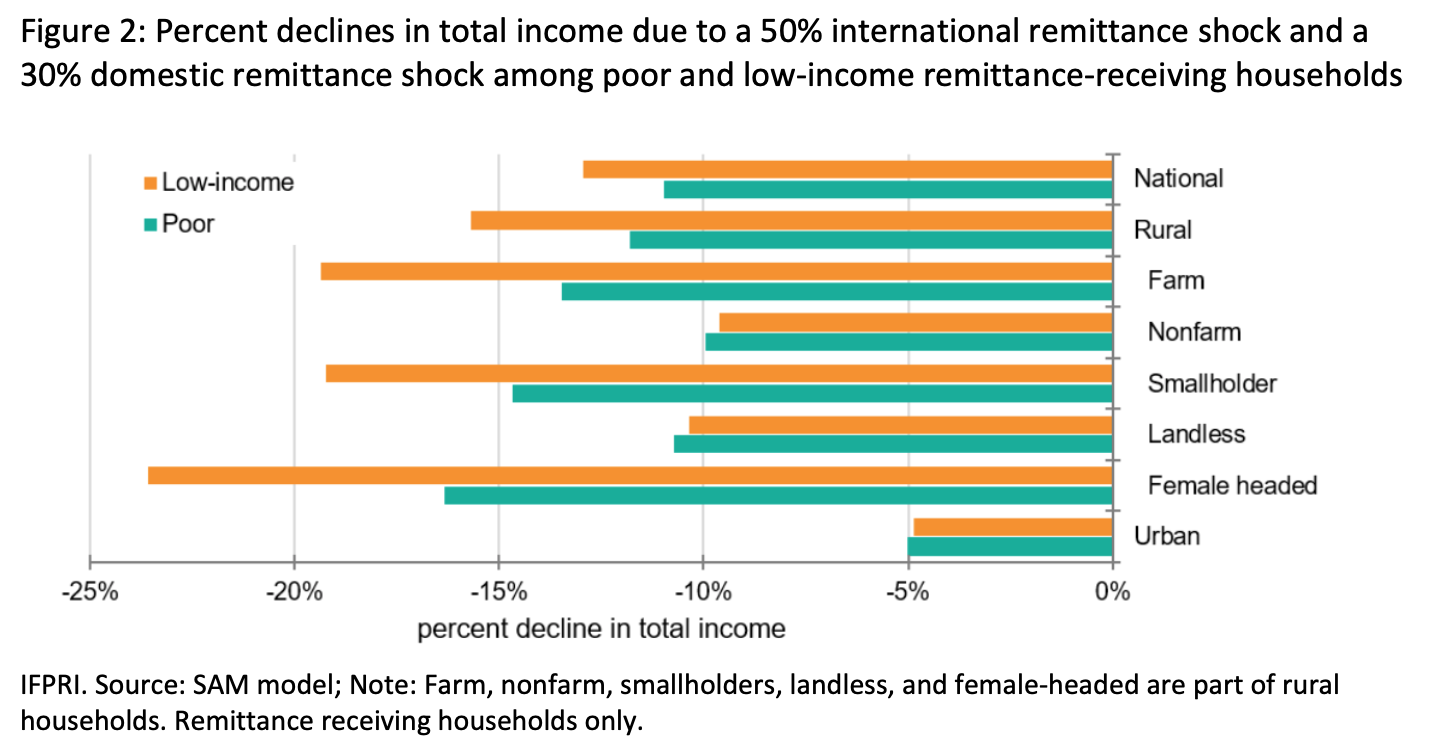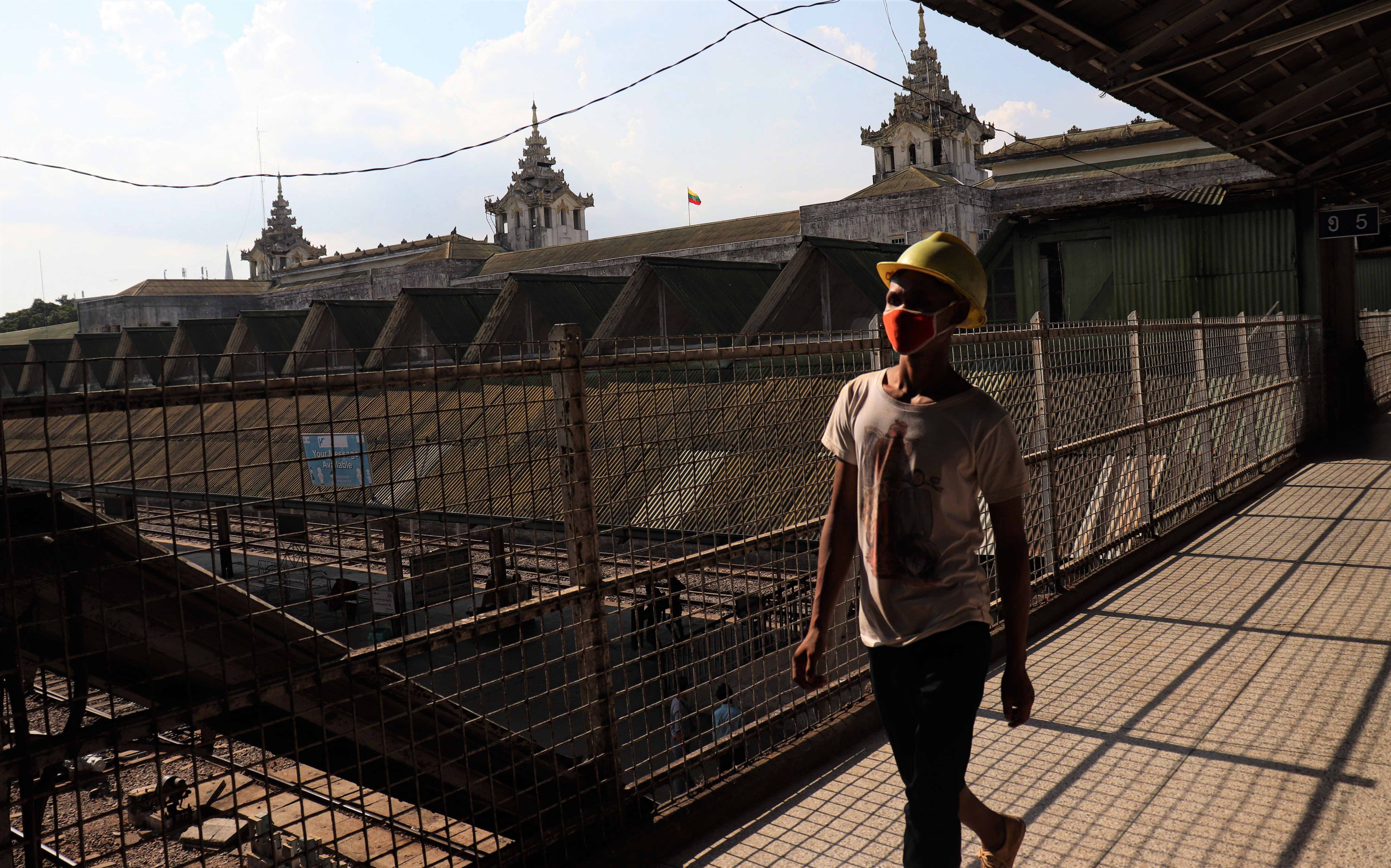As COVID-19 spreads in more low- and middle-income countries, we see a range of responses and effects. In this blog post, Xinshen Diao and Michael Wang assess the direct and indirect impacts on Myanmar’s economy after a two-week lockdown. Almost all households have reduced income from disrupted domestic economic activity or lost remittances. The authors explore immediate policy actions to support poor and vulnerable groups and look at longer-term implications for fiscal stimulus and economic changes post-COVID.—John McDermott, series co-editor and Director, CGIAR Research Program on Agriculture for Nutrition and Health (A4NH).
The COVID-19 pandemic and government lockdown in Myanmar have led to falling exports and lost revenue from tourism and international remittances, hitting the economy hard. In a new series of policy notes, we examine the economic impacts of the pandemic and restrictive measures to mitigate the health crisis, and offer policy recommendations to address declining incomes and other impacts.
An analysis by IFPRI’s Myanmar Agriculture Policy Support Activity (MAPSA) shows a major short-term economic contraction as a result of the two-week lockdown in April—a 41% decline in GDP along with similar declines in most nonagricultural sectors in comparison to the same period without a pandemic.
This is not surprising, as Myanmar’s economy is deeply integrated into a complex supply network both domestically and internationally, and policies affecting certain industries have ripple effects on other sectors through supply and demand linkages. In addition, approximately 4 million Myanmar migrants work internationally, and their lost income due to lockdowns in neighboring countries is expected to impose ongoing significant burdens on low-income households that receive remittances.
In our analysis, we applied a social accounting matrix (SAM) multiplier model to evaluate COVID-19’s direct and indirect effects on Myanmar’s economy. The SAM multiplier model is a simulation tool that describes the economic connections between national economic actors and provides a highly disaggregated picture of the economy, that is suitable for measuring the impacts of short-term shocks.
The lockdown and subsequent restrictive measures have had direct and indirect negative impacts on the flow of goods and services, resulting in a decline of 41 percent in national GDP during the two-week lockdown period (Figure 1). The figure breaks down the decline further to show the different impacts of COVID-19 restrictions on Myanmar’s various economic sectors.
We estimate that agricultural GDP fell 14% during the two-week lockdown period. While agricultural activities were mostly exempt from restrictions, the linkages between sectors in the rest of the economy led to significant indirect impacts, including reductions in demand from non-agricultural sectors, falling exports, lower consumer demand from falling remittance income, and difficulties in operating agribusinesses.
On their own, these negative short-term economic shocks are sufficiently large enough to temporarily push many Myanmar households into poverty and food insecurity. Moreover, our analysis shows that the sharp decline in remittance income is likely to continue for at least a year if not longer. As a result, many low-income households that sit just above the poverty line are expected to fall into poverty, and the extremity of poor households will increase (Figure 2).

Declines in total income from remittance shocks are consistently higher among low-income rural households than poor rural households. However, though the shocks might result in smaller relative income losses for poor rural households, these households will see significant impacts because their income levels were initially much lower. Note that negative impacts on total income are largest for female-headed rural households.
The government recently released a comprehensive and sensible economic response package, the Myanmar COVID-19 Economic Relief Plan (CERP), which includes unconditional cash and in-kind transfers to the most vulnerable and affected households. The current analysis could be helpful in identifying potential recipients among remittance-receiving households and in determining the amount of financial support they need. The anticipated total spending under CERP will be around 2.8 trillion Kyat (about $2 billion). Considering that the loss in national GDP estimated in the our analysis is between 6.4 trillion and 9.0 trillion Kyat by the end of FY 2020, the size of this economic stimulus package might be too modest to enable all firms, households, and the whole economy to return to their pre-COVID 19 growth trajectories in 2021.
Xinshen Diao is the Deputy Director and a Senior Research Fellow in IFPRI’s Development Strategy and Governance Division (DSGD); Michael Wang is a Mickey Leland International Hunger Fellow in DSGD. The analysis and opinions expressed in this piece are solely those of the authors.







